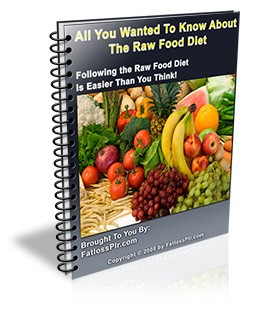
 License Type: Master Resell Rights
License Type: Master Resell Rights  File Size: 765 KB
File Size: 765 KB File Type: ZIP
File Type: ZIP
 SKU: 1719
SKU: 1719  Shipping: Online Download
Shipping: Online Download
Ebook Sample Content Preview:
The following list is to give a clearer picture of the foods one can eat on a raw food diet: Raw and frozen fruits and vegetables, dried fruits and seaweeds, fresh juices, cold pressed oils, herbs, sprouts, sprouted legumes, steak carpaccio tartar, ceviche, sashimi, fish tartar, raw eggs unpasteurized milk, yogurt and cheese. There are some variations on the raw food diet which might exclude certain foods listed here.
Research has also shown that soaking seeds, legumes, grains, and nuts actually deactivates certain enzyme inhibitors. This creates more digestible enzymes. Another thing to note about seeds, beans, legumes, and grains is that: allowing them to sprout also increases their nutrients and digestible enzymes.
If possible, growing one’s own fruits and vegetables can be a great asset. This can cut down on trips to the market. It also allows one to know for certain the complete history of the foods eaten. If food is purchased, organic foods are highly recommended. They have been found to be much more beneficial than the alternative.
If one does not have the opportunity to grow their own food, farmers’ markets can be an alternative to supermarkets. Farmers’ Markets, however, are very hit and miss. Some growers use chemicals, some do not. It is best to ask, but buying locally can be very beneficial.
A raw food diet is not hard to follow. Neither is it hard to try. The best way to venture into the raw food world is to systematically add more and more raw foods into one’s daily diet. This can be over a matter of weeks or a couple months. What scares most people is that they do not want to spend all their time in the kitchen preparing food and they are afraid of missing out on protein.
- File Size:765 KB
- License: Master Resell Rights
- Category:Ebooks
- Tags:2008 Ebooks Master Resale Rights







